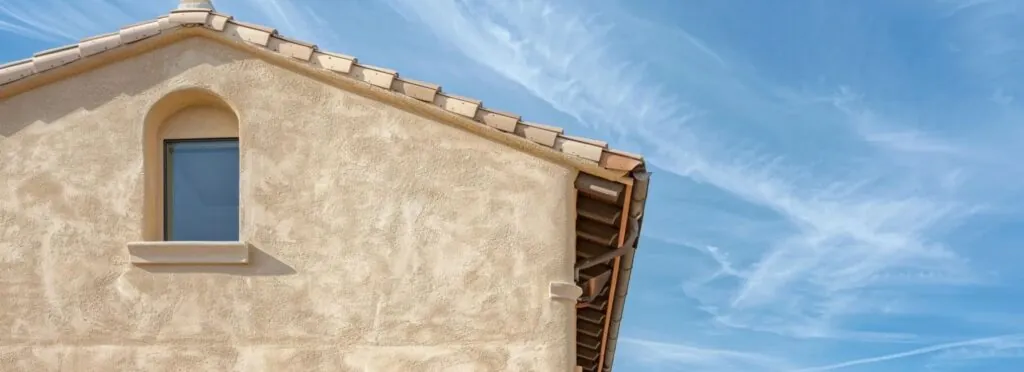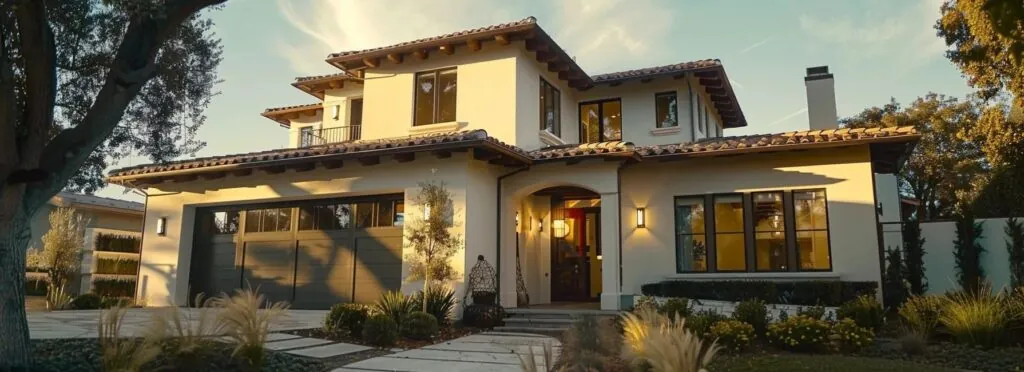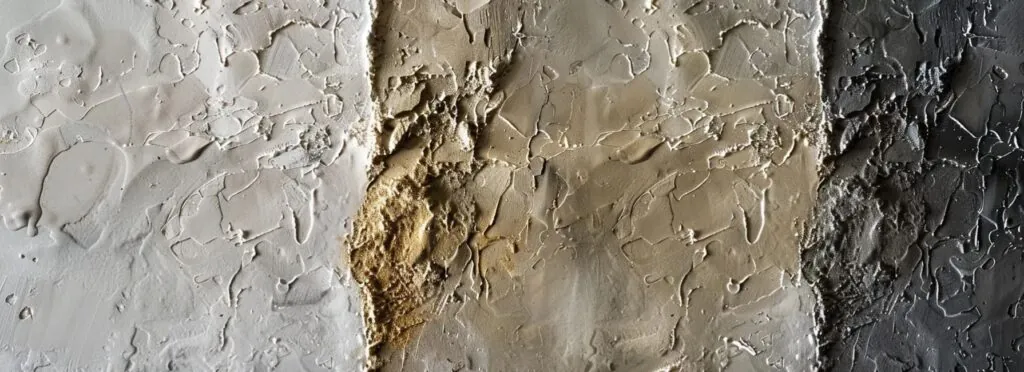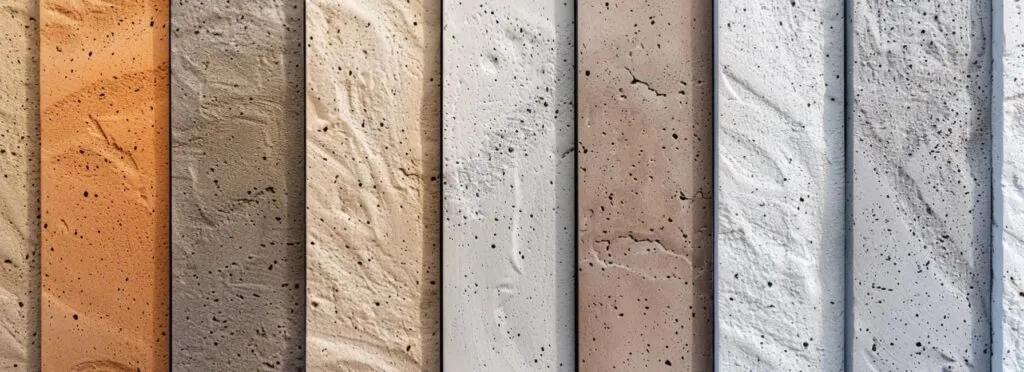Stucco finishes are made from a mix of sand, cement, and water, providing a tough coating for home exteriors. This guide breaks down the different stucco finish types and how they can change the look of your property. You will find information on everyday styles, tips for selecting the right one, and reasons to consider hiring a professional. Knowing about these finishes can help you achieve both beauty and practicality if you want to update your home’s exterior. For more insights, consider the pros and cons of stucco plaster.
Key Takeaways on Choosing the Right Stucco Finish for Your Home
When looking into stucco finishes for your home, it is essential to understand the different stucco finish types available. These finishes are made from cement, sand, and lime and can be applied in various textures for protection and aesthetics. Builders can use a trowel to create specific patterns that match your design preferences. After applying stucco, you can paint it for added color and protection. Choosing the right stucco house exterior finish affects your home’s durability and weather resistance, so consider both functionality and appearance when making your decision.
II. What are Stucco Finishes?
Stucco finishes are the final layer applied to the exterior of buildings, made from a mix of cement, sand, and lime. This layer can be textured in various ways, providing protection and visual appeal. Choosing the right stucco finish is important because it affects the building’s durability and how well it retains color over time. Stucco can also be pigmented for various shades that fit different design styles. Additionally, the use of lime makes the finish breathable, allowing moisture to evaporate, which helps enhance the longevity of the building. All of these features can be combined in different ways to create unique and stunning finishes.
III. Common Types of Stucco Finishes
Stucco finishes offer homeowners a range of options for improving their stucco house exterior. From smooth Santa Barbara stucco to textured Spanish Lace, each type has its own look and protective qualities. Choosing the right stucco finish type is vital for both aesthetics and durability. Here are some of the most common stucco finishes you will see on home exteriors:

1. Smooth Finish
The smooth finish is popular for modern homes, offering a sleek, uniform look that pairs well with contemporary designs. Achieved using specialized tools, this finish requires careful application to ensure an even surface that adheres well to the wall. Homeowners appreciate its elegant appearance and low maintenance. The smooth stucco finish combines durability with a clean aesthetic, making it an eco-friendly choice for enhancing a property’s exterior.
2. Dash Finish
The dash finish adds rustic charm to a building’s exterior through its textured appearance. This finish is created by flicking stucco onto the wall, resulting in a speckled pattern that varies in density. It is versatile and works well with different architectural styles, making it an excellent option for home upgrades. Besides enhancing curb appeal, the dash finish effectively covers imperfections beneath, providing durability and visual interest for homeowners.
3. Spanish Lace Finish
The Spanish Lace finish gives a textured, old-world charm to the exteriors. It combines elegance with a rustic touch, making it ideal for those seeking a unique look. This finish can hide minor imperfections, making it a practical choice for stucco repairs. The technique involves layering to create its signature lace-like pattern. Homeowners looking for stucco materials can find this finish a beautiful way to enhance their home’s exterior while enjoying its decorative benefits.
4. Stucco Aggregate Finish
The stucco aggregate finish stands out for its robust texture, incorporating materials like pebbles or crushed stone. This enhances its visual appeal and adds protection against the elements, making it a smart choice for homeowners. It masks minor blemishes, which is helpful during repairs. Brands like Sto Stucco offer these finishes, ensuring durability while contributing to the overall beauty of a property’s exterior looks and feel.
5. Synthetic Finish (EIFS)
Synthetic stucco, or EIFS, combines the durability of traditional stucco with modern insulation features. This multi-layered system includes foam insulation, reinforced mesh, and an acrylic coating, enhancing energy efficiency for comfortable interiors. The flexibility of EIFS allows for various textures and colors, making it both a protective and aesthetic upgrade. For homeowners wanting a resilient and stylish exterior, synthetic stucco is a great option for a range of design needs.
6. Textured Finish
Textured finishes give homeowners a unique tactile experience, featuring raised patterns that enhance a property’s character. Available in various textures, this finish allows for customization to suit personal style. Colored stucco can also be incorporated, adding depth and longevity to the appearance. Among stucco finishes, the textured option effectively combines protection with creative expression, ensuring a visually appealing and secure building facade that holds up well.
Related Post:How Much Does It Cost to Install Stucco?
IV. Choosing the Right Stucco Finish

Choosing the right stucco finish type impacts a home’s exterior character and durability. Consider architecture, local climate, and maintenance needs to ensure visual harmony and long-lasting performance. Regular upkeep is essential. Here are some things to keep in mind:
A. Consider Your Home’s Architecture
When choosing a stucco finish, it is essential to consider your home’s architecture—the style—whether modern, traditional, or Mediterranean—will suggest the best texture and color. For example, a smooth finish works well with contemporary designs, while a Spanish Lace texture fits a classic villa. Pay attention to existing features like archways and columns; the stucco finish should enhance these elements. A rough finish can highlight a craftsman bungalow’s charm, while a fine finish adds elegance to a colonial home.
B. Evaluate Climate Conditions
Assessing your local climate is crucial for selecting the right stucco finish, as weather can affect durability and performance. A finish that works well in dry areas may struggle in regions with heavy rain or freezing temperatures. For example, a finish that resists water penetration in rainy climates can protect the building’s structure. In humid areas, breathable finishes help moisture escape, preventing damage. Consulting a professional can help you choose a finish suited to your region’s weather challenges.
C. Think About Maintenance
Maintenance is an essential factor when choosing a stucco finish. Consider how much time and effort you’re willing to invest in upkeep. Some finishes may look great initially but require frequent cleaning or re-coating. For example, smooth finishes can show dirt easily and need regular washing. In contrast, textured finishes like the dash or Spanish Lace are better at hiding imperfections and are generally easier to maintain. Balancing aesthetics with realistic maintenance needs will ensure your home’s exterior stays beautiful and protected.
You might like:Understanding How Long Stucco Lasts in New Mexico
V. Enhance Your Home with Stucco Finishes, Consult a Professional
Transforming a home with stucco finishes requires expert help. A professional can guide homeowners through various stucco finishes, ensuring the chosen option enhances the property’s look and lasts long. Consulting a stucco expert is crucial for achieving a smooth application. These experts offer insights on materials, like EIFS or traditional stucco, to ensure beauty and durability.


An experienced stucco professional assesses your home’s specific needs, considering cold or sunny climates and architecture. This tailored approach ensures the stucco looks great and functions well. Investing in professional stucco finish services leads to high-quality results and helps avoid the issues that can arise from DIY projects, keeping your stucco house exterior attractive and lasting.
Conclusion
Choosing the right stucco finish is crucial for improving a building’s appearance and protecting its exterior. Different finishes, whether smooth or textured, provide unique looks and practical benefits that suit various architectural styles and climates. The climate also affects the longevity and maintenance of stucco, so it is essential to pick a finish that matches local weather. Consulting a professional can help homeowners achieve a durable and appealing stucco exterior tailored to their specific needs. Call the local stucco pros and find the finish that will look best for your home today!
FAQs
Which stucco finish is best?
The “best” stucco finish depends on your style preferences, location, and climate. Smooth finishes are popular for a modern, sleek look, while textured finishes like dash or Spanish lace provide more character and hide imperfections well. In hot climates, lighter, textured stucco finishes can help with cooling. For durability and low maintenance, acrylic-based finishes are often recommended. Ultimately, the best stucco finish is one that aligns with your design goals and environmental conditions.
What are the different types of stucco?
1. Traditional Stucco (Cement-based): Made of sand, cement, lime, and water, this is applied in three layers and is durable and breathable.
2. Acrylic Stucco: This type uses acrylics or polymers in the mix, giving it greater flexibility, resistance to cracks, and more color options.
3. EIFS (Exterior Insulation and Finish System): A multi-layered system that incorporates insulation boards under the stucco for energy efficiency and flexibility.
What is the difference between a smooth finish and a Santa Barbara stucco finish?
Smooth Finish: A flat, sleek surface that creates a modern, clean look. It’s harder to apply and prone to showing cracks or imperfections if not done correctly.
Santa Barbara Finish: A semi-smooth, rustic texture that is smoother than traditional textured stucco but rougher than a pure smooth finish. It is hand-troweled, often providing a more natural, earthy look while still being relatively smooth. It can add depth and visual interest without the ultra-sleek appearance of a smooth finish.




